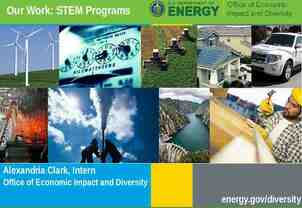The Home World: EARTH a 1 AU P 365 d i (orb) 0o e 0.017 Prot 1d
51 Slides7.79 MB
The Home World: EARTH a 1 AU P 365 d i (orb) 0o e 0.017 Prot 1d i (rot) 23.5o R 6378 km M 6.0 x 1024 kg 5.5 g/cc g 9.8 m/s2 vesc 11 km/s A 0.37
Near-Earth Space: The Van Allen Belts
Nature of the Belts Discovered early in the space age with a Geiger counter. Energetic charged particles are trapped in the Earth’s magnetic field. The inner belt contains protons, and the outer contains electrons. The inner belt begins at only 100 km or so above ground.
Aurora e
Aurora from Space
Aurora Borealis from Yellowknife in Canada
Aurorae Solar wind particles are generally repelled by the magnetosphere, but some “sneak” into the atmosphere by running along magnetic field lines toward the poles. (Outer van Allen belt) Earth atmospheric particles sneak into the belts as well. (Inner van Allen belt) At 100km altitude, solar wind particles collide with atmosphere particles to produce an auroral light display.
Comparison of Planetary Magnetic Fields Equatorial Field (Gauss) Mercury 0.002 Venus 0.0003 Earth 0.305 Mars (0.0004) Jupiter 4.2 Saturn 0.20 Uranus 0.23 Neptune 0.06-1.2
Space Debris The space around the Earth is not exactly crowded, but there is a great deal of “space debris” in orbit around Earth.
The Kessler Syndrome
The Earth at Night (issues of light pollution)
Atmosphere: Appearance of the Sky
Understanding Sky Color
Sky Color from Two Places
Structure of the Earth’s Atmosphere
Atmosphere: Ozone Layer Component
Antarctic Ozone Hole
Ozone Destruction Ozone molecule O3 O3 protects use from harmful solar UV radiation An efficient O3 destruction mechanism involves chlorofluorocarbons (CFC’s – Cl, F, C): chemistry Catalyst process A single Cl atom can be used 1000’s of times to break up ozone molecules!
Ozone Trends North Pole South Pole
Atmosphere and Surface: Energy Budget of the Earth
Global Warming: Trends and Effects The overall topic of global warming is complicated. Increased greenhouse gases (carbon dioxide, methane, etc) act like a blanket to block the escape of infrared “heat” light. The Earth has also undergone cycles in the past.
Share Question The previous figure displayed information about sea ice area. 1. Is “area” the best measure for the amount of ice? 2. If so, why? 1. If not, what would be better? And, why?
Climate Considerations
Weather Primarily driven by solar radiation. Other significant influences include: 1. Land mass and oceans 2. Planet rotation 3. Atmospheric composition o Ozone o Greenhouse effect 4. Volcanic activity
The Hadley Cell: Fundamental circulation pattern because of the fact that planets are round.
Coriolis Deflection: Planet rotation causes north-south weather circulation to deflect east-west.
The Coriolis Force
Hadley Cells on the Earth
Volcanoes and Resurfacing Magma is less dense than rock, and so rises from the interior This breaks through, giving a volcano Products – New rocks (esp. basalts) – Ash ( 1mm ) – Cinders ( 1cm ) The key point is that volcanoes lead to resurfacing and are evidence of an active planetary interior
Mount St. Helens
Tungurahua (Andes)
Rock Types Igneous (“ignus” fire) Sedimentary - formed form from crystallization by deposition of small of molten rock particles which become cemented o Magma - molten inside (e.g., sandstone, earth shales) o Lava - molten on surface Metamorphic - changed * Of planetary interest: by heat, pressure, o Basalt - fast cooling and/or chemistry o Granite - slow cooling (e.g., marble)
Crustal Plates and Tectonic Activity Earth’s surface (or crust) is not a single solid piece, but consists of large and small “plates” These plates slowly drift around At points of convergence, get volcanoes, mountain ranges, and earthquakes
Crustal Plates
Long Term Plate Drifting
Plate Motion
Volcanic Activity on Earth and Relation to Motion of Plates
Recycling process and resurfacing effects
Interior Structure of the Earth
Detail of Earth Interior
Share Question Earthquakes are an important tool for scientists because their vibrations a) influence the Earth's orbit about the Sun b) allow the study of the Earth's internal structure c) inform us of the mass of the Earth d) are used to predict the future of plate tectonics
Seismology Study of the Earth’s interior from how it carries vibrations Types of vibrations – P-waves: pressure waves that travel like sound – S-waves: shear waves, like on a rope Terminology: – Focus: point at which the earthquake originates – Epicenter: surface point above the focus – Seismometer: a device to measure P & S waves and the strength of earthquakes
Earthquake
Wave Forms
Refraction of traveling sound waves in the Earth reveals its components
“Shuddering” of the Earth
Earth’s Magnetic Field Lines of force are somewhat like a bar magnet. Its origin and maintenance comes from dynamo activity in the core: Circulation of conducting fluid (e.g., molten metals) generates magnetic fields. So, planetary magnetic fields act like probes of unseen planetary interiors
Earth Dynamo
























































